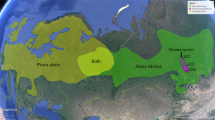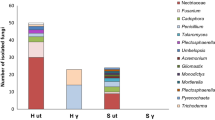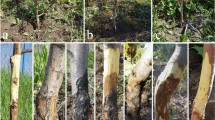Abstract
THE development of branch cankers from previously infected fruiting spurs was noted by Wormald1 in his original etiological study of the bacterial canker disease of cherry (Ps. mors-prunorum), and later by Webb2, who concluded that most branch cankers originated in this way. Records made over the past two years during field observations on 5–12 year old cherries of several varieties have confirmed this view. Between 90 and 100 per cent of branch cankers examined, depending on the age and variety of the tree, were around the base of a dead spur. This association, together with the frequent occurrence of dead spurs with incipient cankers at the base and dead spurs without basal cankers, clearly indicated the sequence of infection.
This is a preview of subscription content, access via your institution
Access options
Subscribe to this journal
Receive 51 print issues and online access
$199.00 per year
only $3.90 per issue
Buy this article
- Purchase on Springer Link
- Instant access to full article PDF
Prices may be subject to local taxes which are calculated during checkout
Similar content being viewed by others
References
Wormald, H., J. Pomol., 15, 35 (1937).
Webb, P. C. R., Rep. E. Malling Res. Sta., 1949, 120 (1950).
Montgomery, H. B. S., and Moore, M. H., J. Pomol., 21, 155 (1945).
Author information
Authors and Affiliations
Rights and permissions
About this article
Cite this article
CROSSE, J. The Leaf Scar as an Avenue of Infection for the Cherry Bacterial Canker Organism, Pseudomonas mors-prunorum Wormald. Nature 168, 560–561 (1951). https://doi.org/10.1038/168560b0
Issue Date:
DOI: https://doi.org/10.1038/168560b0
This article is cited by
-
Bacteriekanker bij steenvruchten
Tijdschrift Over Plantenziekten (1957)
Comments
By submitting a comment you agree to abide by our Terms and Community Guidelines. If you find something abusive or that does not comply with our terms or guidelines please flag it as inappropriate.



